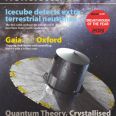Particle physics
Accelerator and Particle Physics Education at A-Level: APPEAL 6
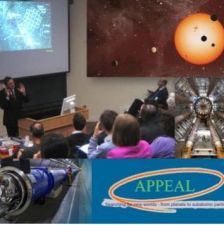
Cost: Free
A one-day conference at Oxford Physics to give A-level teachers an opportunity to learn about the phenomena and scientific challenges which connect astronomy, particle physics and the physics of particle accelerators.
This is the sixth APPEAL teachers’ conference exploring High Energy Physics and Accelerator Science. This year we link to "The International Year of Light".
55th Cherwell-Simon Memorial Lecture 2015
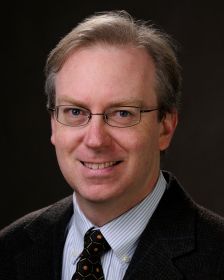
Professor Charles Kane, Class of 1965 Endowed Term Chair & Professor of Physics, University of Pennsylvania will deliver the 55th Cherwell-Simon Lecture.
Title
Topological Boundary Modes from Quantum Electronics to Classical Mechanics
Olivia Hawkes, Condensed Matter Physics
T: 01865 272225
E: olivia.hawkes@physics.ox.ac.uk
26 March 2015
Oxford graduate student's supersymmetry search is LHC physics highlight
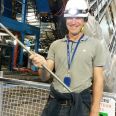
The first ever search for the supersymmetric partner of the charm quark, led by Oxford graduate student Will Kalderon, has been selected by the ATLAS experiment at CERN as one of its physics highlights of the first run of the LHC.
26 November 2014
Now you can look for Higgs boson siblings by eye!
Oxford physicists are asking online volunteers to spot tiny explosions that could be evidence for as-yet-unobserved relatives of the Higgs boson.
The Higgs Hunters project launched today enables members of the public to view 25,000 images recorded at CERN's Large Hadron Collider. By tagging the origins of tracks on these images, volunteers could spot tiny sub-atomic explosions caused when a Higgs boson ‘dies’, which would be evidence for a kind of particle new to physics.
23 September 2014
ATLAS Supersymmetry workshop in Oxford
The Higgs boson is just the start. With the collision energy of the Large Hadron Collider (LHC) about to increase from 8 to 13 TeV, the search for other, as-yet-unobserved particles will soon be on.
This week, 140 physicists from around the world are meeting in St Catherine's College, Oxford, to plan their new-particle search strategies with the ATLAS experiment at the LHC.
Massive Black Holes and Galaxies

Prof. Reinhard Genzel
MPI for Extraterrestrial Physics, Garching
University of California, Berkeley
Leanne O'Donnell
01865 613 973
Leanne.odonnell@astro.ox.ac.uk
26 June 2014
Women In Science Fellowship Award for Dr Sneha Malde

Dr Sneha Malde of Oxford University's Department of Physics has been awarded one of this year's L'Oréal-UNESCO UK & Ireland For Women In Science Fellowships.
2014 Halley Lecture
University of Oxford
Halley Lecture
"How the Universe Evolved From Smooth to Lumpy -- the Physics of Galaxy Formation"
Professor Eliot Quataert
University of California, Berkeley Astronomy Department
Tuesday, 10 June 2014 at 5pm
(to be seated by 4.50pm)
Martin Wood Lecture Theatre
Clarendon Laboratory
Parks Road, Oxford
THIS LECTURE IS OPEN TO THE PUBLIC
This lecture will be followed by a Drinks Reception in the foyer of the Martin Wood
Leanne O'Donnell
Tel: 01865 613 973
Email: Leanne.odonnell@astro.ox.ac.uk
15 May 2014
Phil Burrows elected spokesperson of the International Compact Linear Collider
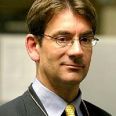
Congratulations to Professor Phil Burrows who has been elected Spokesperson of the international Compact Linear Collider (CLIC) accelerator collaboration, which is a multi-national consortium of 65 institutes in 29 countries. Over the next three years, Phil will engage with the institutes to ensure that CLIC’s R&D programme pushes ahead during the critical phase ahead of the next update of the European strategy for particle physics.

